…an elegant stretch across the Thames.
The planned grand opening of Westminster Bridge by Queen Victoria had to be abandoned as she was in mourning for her husband, Prince Albert, who had died five months earlier on December 14, 1861. Instead it was officially opened, though quietly, at four o’clock in the morning on May 24, 1862, the day and hour of Queen Victoria’s birth.
But this was not the first bridge to be built across the river here. There was an earlier bridge designed by Swiss architect Charles Labelye, opened on November 18, 1750, and this was the bridge painted by Canaletto in 1746 before its completion, and from where Wordsworth looked out over the views of London before him and wrote ‘Upon Westminster Bridge’ on September 3, 1802.
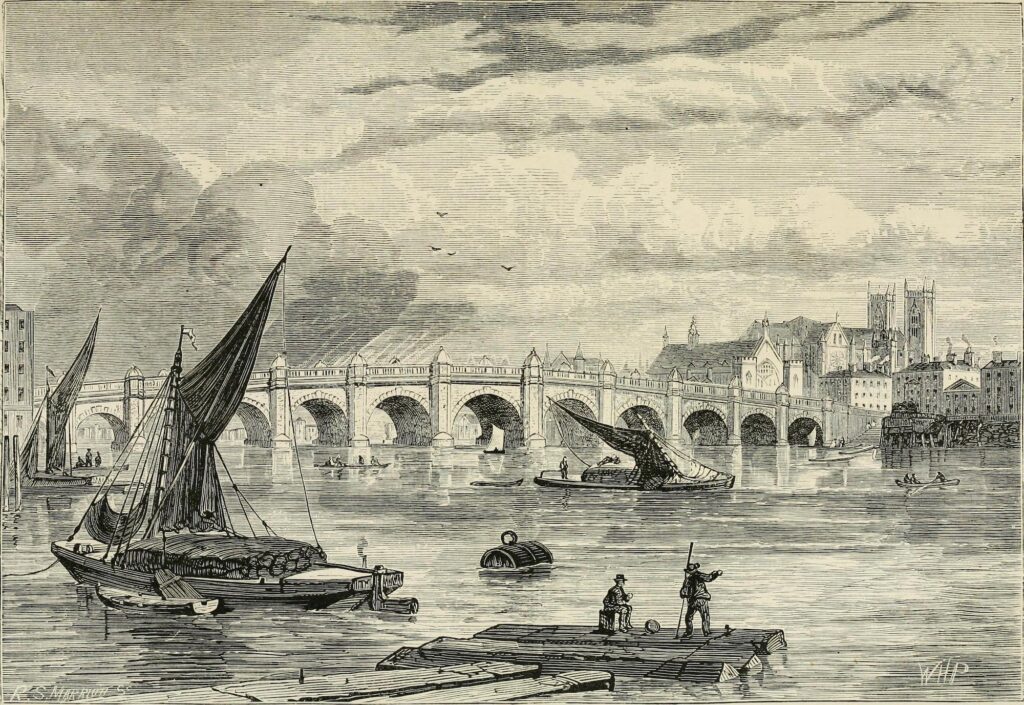
An article in British History Online quotes The Gentleman’s Magazine which described the new bridge as: “a very great ornament to our metropolis [that} will be looked on with pleasure or envy by all foreigners.” There is mention of the echo beneath the arches attracting musicians “with French horns to entertain themselves under it in the summer.” On the level of the roadway, there were attractive alcoves above each pier “designed for shelter in bad weather”. However, they were seen by some as the perfect place for “undesirables”, robbers, pickpockets, and illegal traders, so watchmen were employed to patrol them at night. And until recently along the present Westminster Bridge, something of this unwelcome element remained as hustlers were frequently conning tourists with the three cup trick. Their activities were curtailed by the police and for the moment have been brought to a stop by the Covid pandemic.
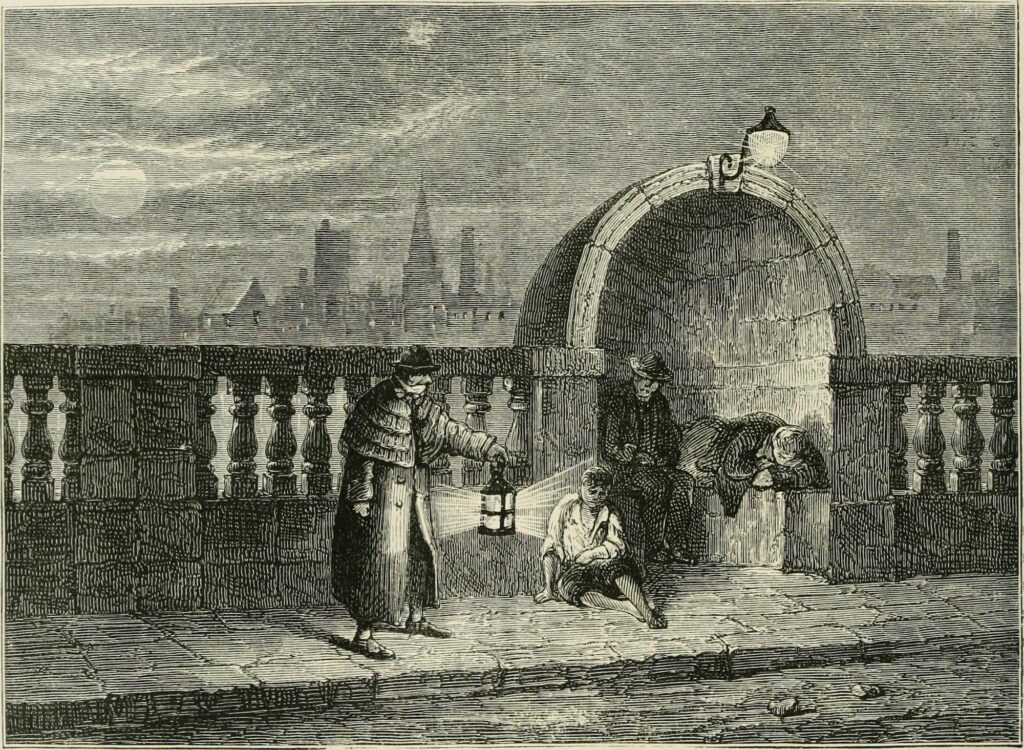
Perhaps, so as not to give too fierce or an alarming impression of London to potential visitors in the past, the picture above shows a quietly subdued, idealised impoverished family seeking refuge for the night.
A further article in British History Online describes how the removal in 1831 of the old London Bridge further downstream, increased the force and flow of the river which was damaging the Westminster Bridge. After deliberations in parliamentary committees between 1844 – 1850, it was finally agreed that a new bridge should be built. A Commission was set up in 1851 to sort out the details. Work began in 1854 and was completed eight years later.
The bridge with its seven arches, was designed by architect and engineer Thomas Page in collaboration with Sir Charles Barry, who together with Augustus Pugin had won the commission to rebuild the Houses of Parliament after the destructive fire of October 1834. Gothic in character, it was designed to complement the Perpendicular Gothic style of the parliamentary buildings which were still in the process of being rebuilt. The House of Lords first sat in 1847 and the House of Commons in 1852. An article in Engineering Timelines details “Barry’s contribution to the design of Westminster Bridge included the Gothic quatrefoils in the spandrels of the arches and the ornamental shields…”, and the cast iron lamps, also designed by Barry add a finishing touch of elegance. The south-facing Gothic pierced trefoils on the balustrades have been the cause of much amusement. For at certain times of the day if the sun is shining through them, casting light and shadows on the pavement below, the walkway is adorned with unmistakable male anatomical forms. An unintended curlicue…
The balustrades were completely replaced during restoration work in 1997 but it was back in 1970 that the bridge, formerly grey, was painted in its present green, as an echo of the colours in the Chamber of the House of Commons. It was a decision said to have been taken by the Historic Buildings Committee of the former Greater London Council, then in charge of several of London’s bridges, including Westminster Bridge.
Joining London, Canon Street Railway, Millennium and Southwark Bridges, Westminster Bridge is one of the next of four bridges across the Thames to be illuminated as part of the Illuminated River art project designed by Leo Villareal. “It will be lit underneath in soft green tones, complementing the bridge’s characteristic colour and activating the latticework beneath.”
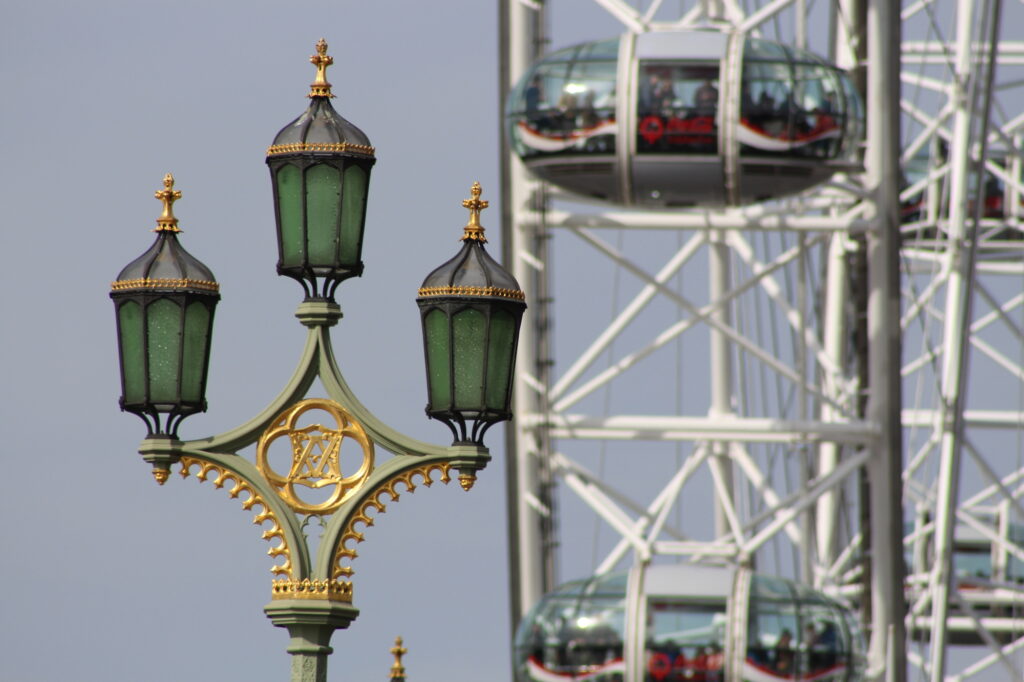
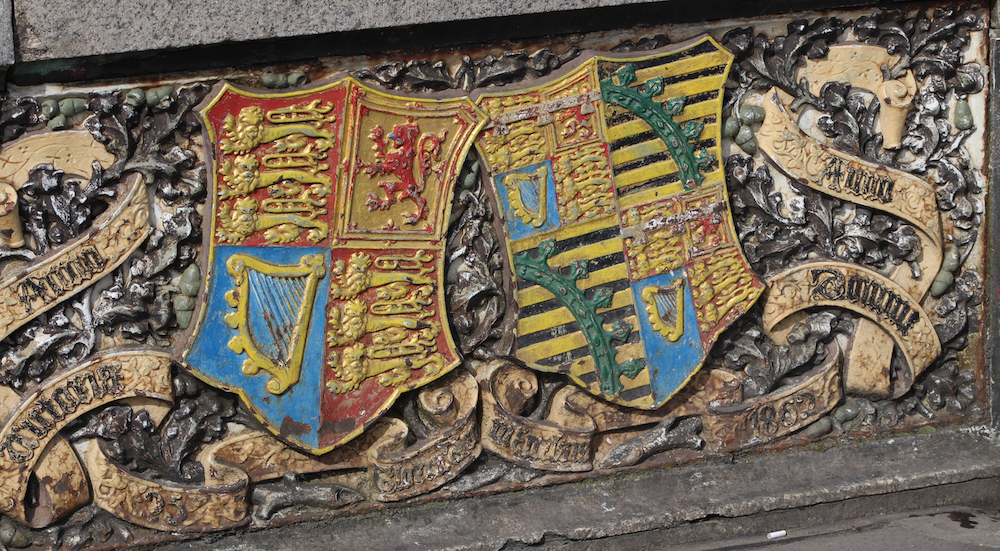
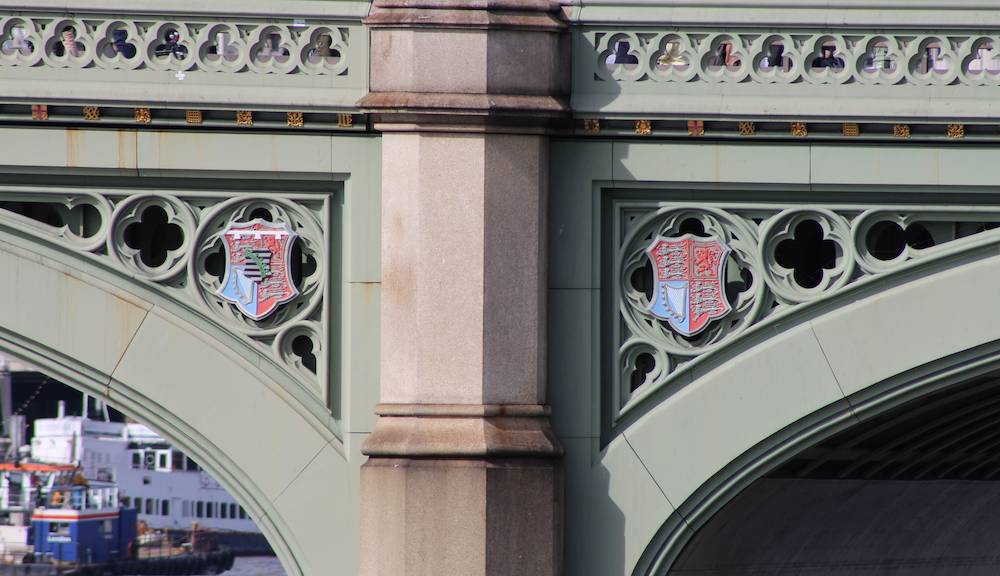

Westminster Bridge and its traffic, both vehicle and pedestrian, is watched over by two statues, strong symbols of England: on the west side, the Celtic Queen Boudicca, who led the Iceni tribe against the Romans in c. 60 AD and on the east side the South Bank Lion, saved for the nation by King George VI. And an article in the online blog Heritage Calling adds an interesting note on traffic : “The current bridge became the site of the world’s first traffic light in December 1868. Consisting of three semaphore arms on a pillar, with red and green lamps for night-time use, the traffic light was operated by a specially trained police constable.”
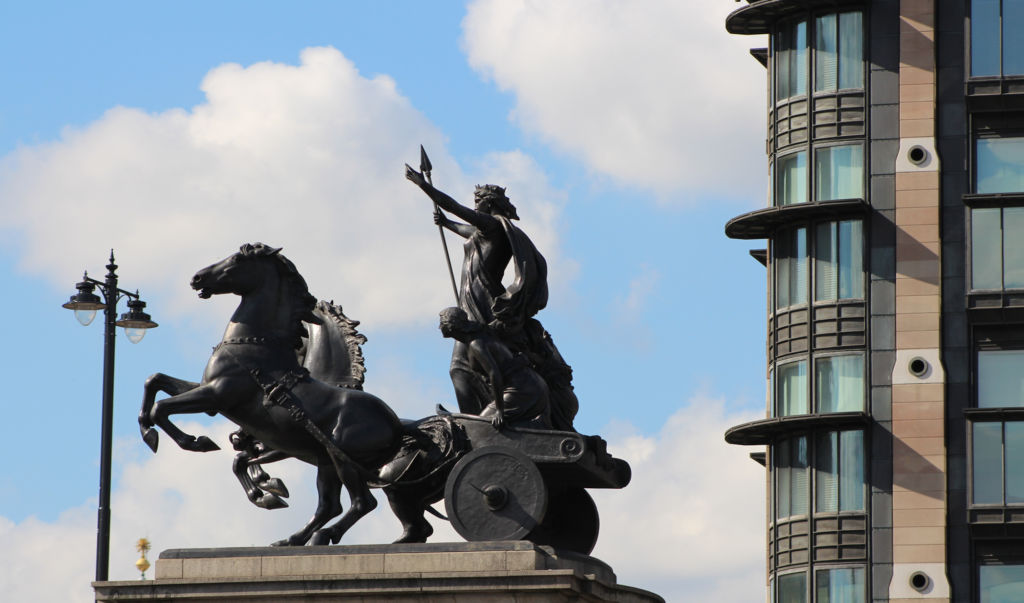
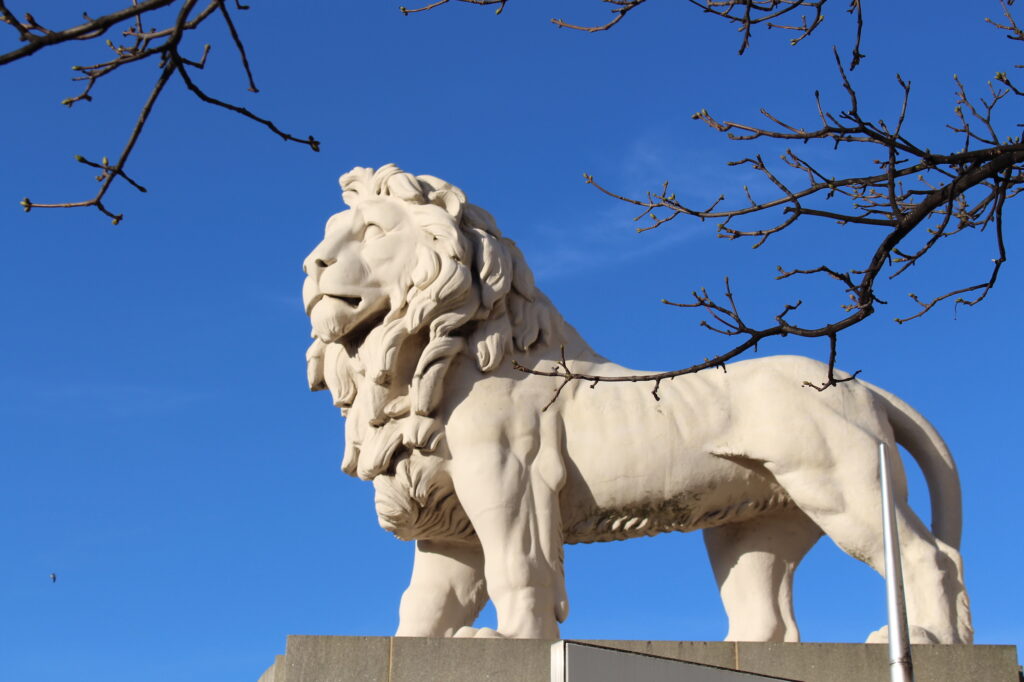
If you have the time to linger, Westminster Bridge is a good place from which to look out over the Thames, its river traffic, and London. At least it has been so until this time of Covid. However, I hope that when we’ve got through the pandemic, you will be able to see the pleasure and party boats as I saw them last year. In normal times there’s always a fair amount movement on the river.
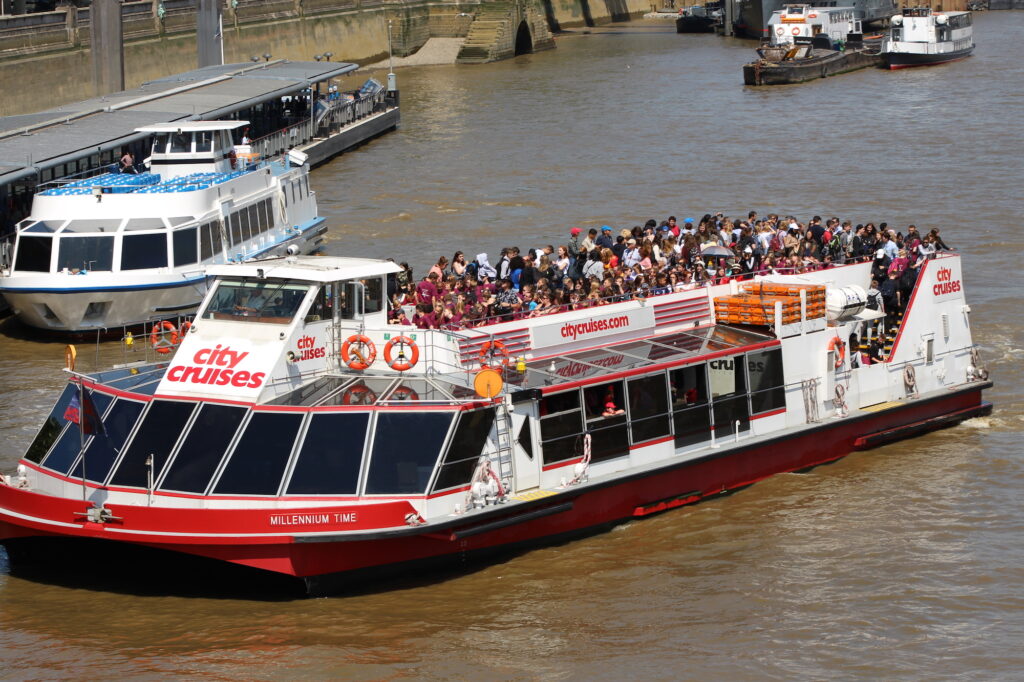
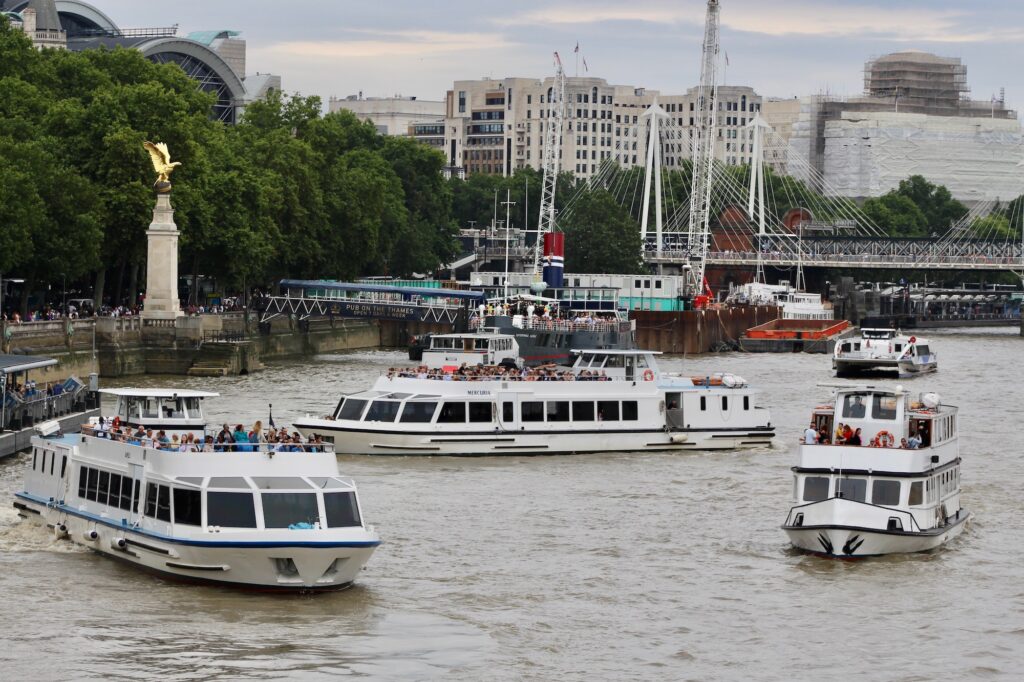
Though the outings of sightseeing boats have mostly been severely compromised, essential services have been maintained throughout the pandemic. The Cory waste transporting tugs continued to tow their barges downstream and the needs of London’s super sewer’s constructors Tideway were supplied by tugs bringing essential parts and supplies for their work. Added to that, safety and security along the river and the surrounding area has been assured throughout by Port of London, the Thames RNLI, Fire Rescue, and Police patrol vessels.
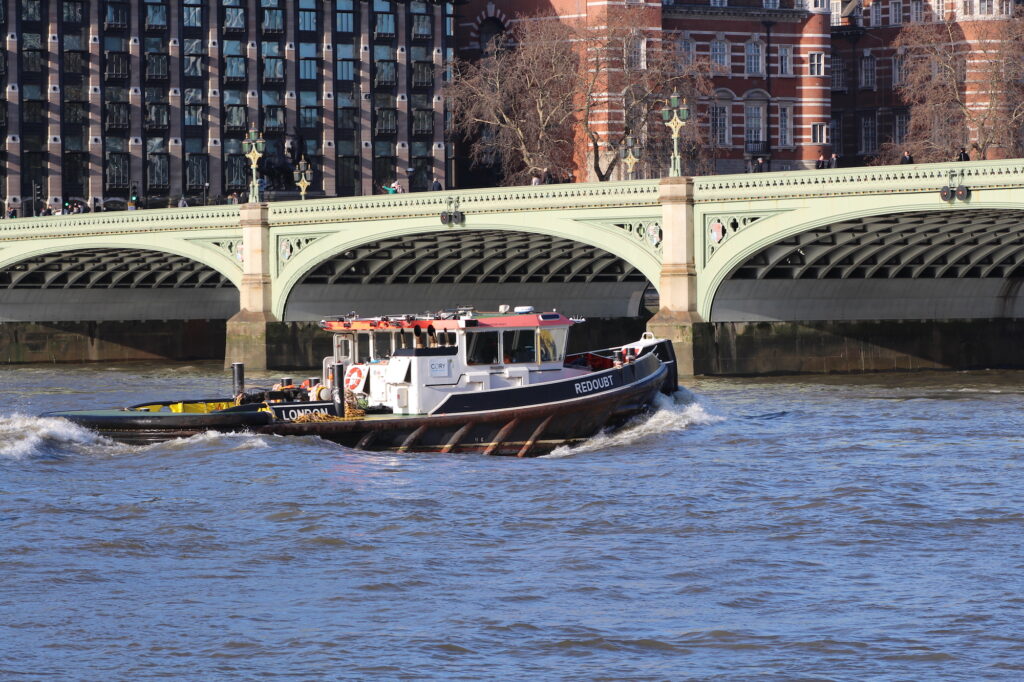
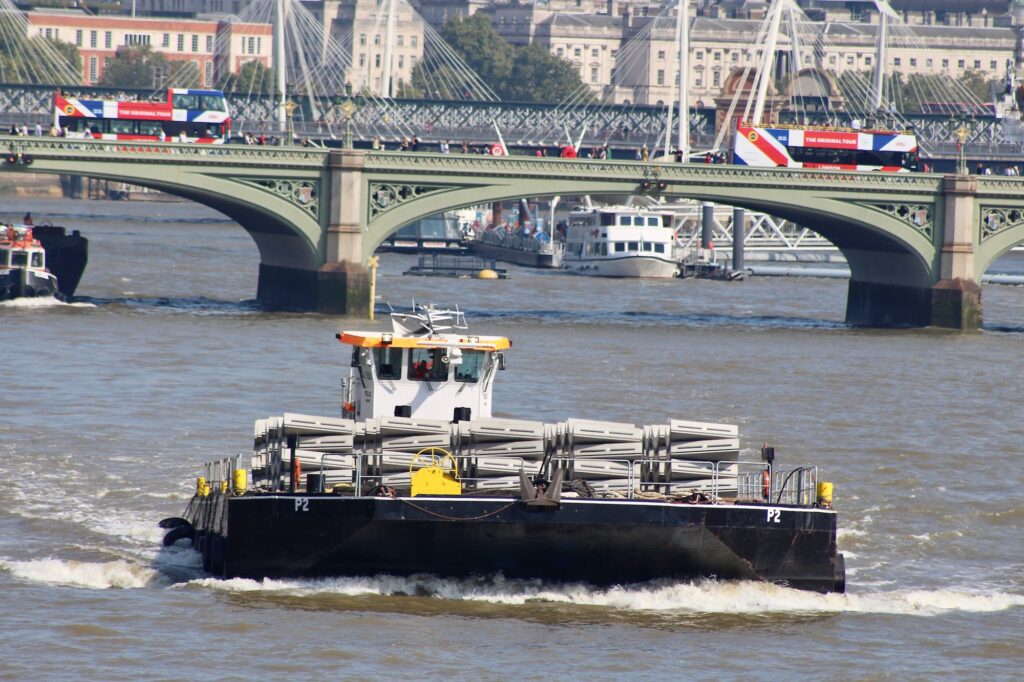
There are many hazards along the Thames that navigators have to be aware of. And one in particular is how to deal with the several characteristics of tidal flow and currents through and around the cluster of bridges over the river in central London. Westminster Bridge has another potential hazard in that its central arch has a lower clearance height during an average high water spring tide than both Lambeth Bridge, the next bridge upstream, and Charing Cross Rail Bridge, the following bridge downstream. This can lead to a nervous half hour or so when captains, with the help of their crew, work out if they have enough clearance to go through safely.
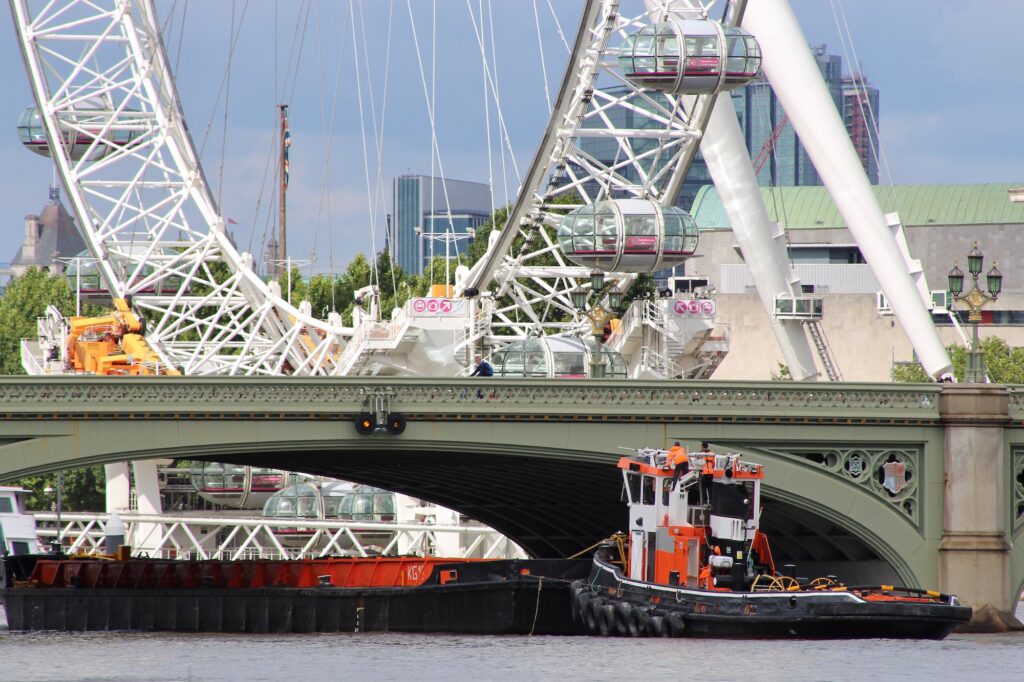
Yet Westminster Bridge has a darker side too. Over the years, it has been one of the places where, for many unable to face the problems in their lives, they have ended them by climbing over the parapets and jumping down into the icy waters below.
Still fresh in people’s minds are the tragic deaths and woundings of innocent Londoners and tourists in a brutal terrorist attack on March 22, 2017, as the perpetrator mounted the pavement in his car and drove at speed hitting pedestrians indiscriminately. Six people were killed and around fifty wounded, including several among a party of schoolchildren from Concarneau in Brittany. Among the dead was the unarmed PC Keith Palmer, stabbed after the killer left his vehicle and ran through the gates of Parliament determined to inflict more harm. He was shot dead.
William Wordsworth, whose association with Westminster Bridge is one of London’s best known literary landmarks, as you will see further below, also wrote London, 1802. A powerful poem addressed to Milton, it is a lament for England’s lost happiness, culture, manners and virtue, a lament that resonates strongly with many today. England is: “a fen of stagnant waters: altar, sword, and pen […] We are selfish men…”
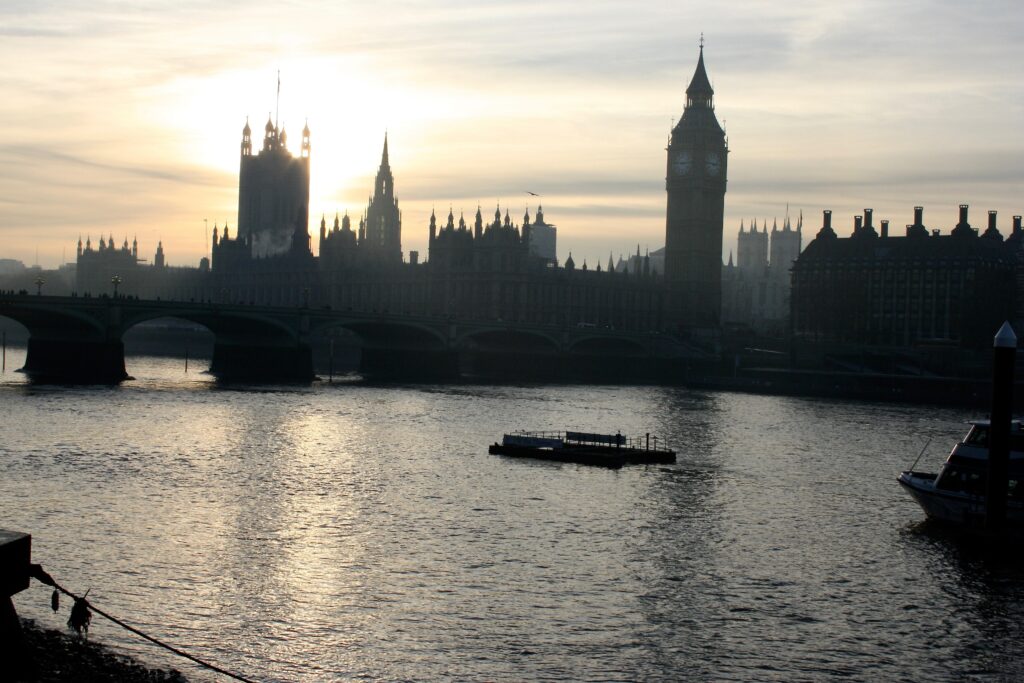
Yet Wordsworth also wrote his paean to London Upon Westminster Bridge in that same year. His different mood and the very different London of over two hundred years ago may be an unrecognisable, romanticised London, but is a moving vision all the same:
“…This city now doth like a garment wear
The beauty of the morning: silent, bare,
Ships, towers, domes, theatres, and temples lie
Open unto the fields, and to the sky, –
All bright and glittering in the smokeless air.
Never did sun more beautifully steep
In his first splendour valley, rock or hill;
Ne’er saw I, never felt, a calm so deep!
The river glideth at his own sweet will…”
As night falls you can fade out extraneous traffic noise and look over the river to see its ever-changing patterns and reflections…
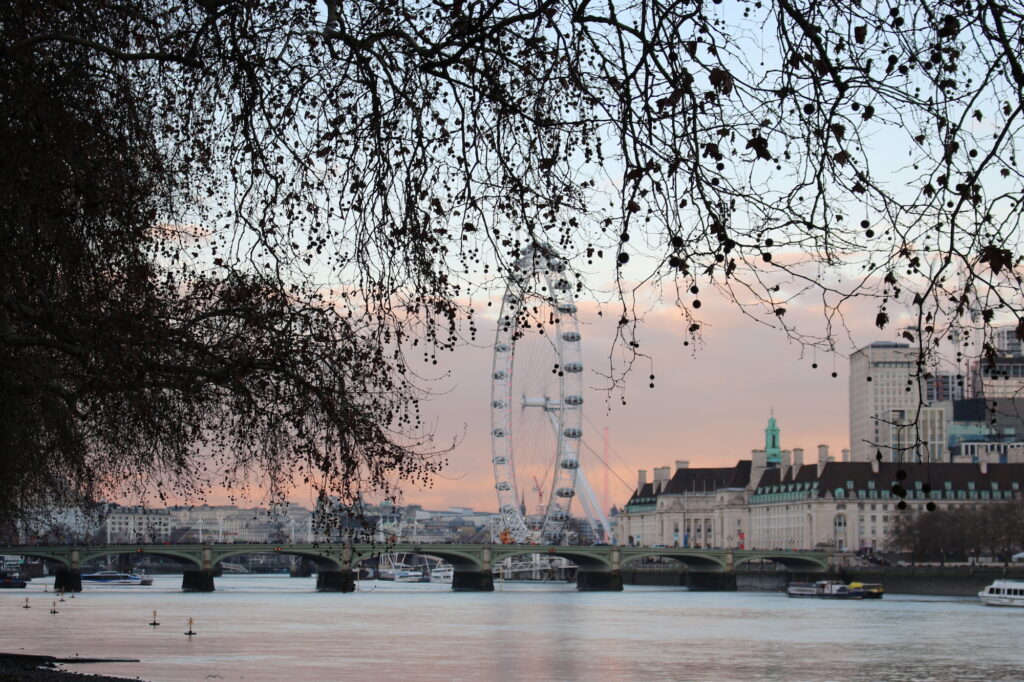
…as office and apartment lights are switched on, turning the Thames into multiple glitter paths of liquid gold. And yes, though today’s landscape would be mostly alien to Wordsworth, it is still possible, despite everything, to feel as he did, a deep sense of calm while watching the river.
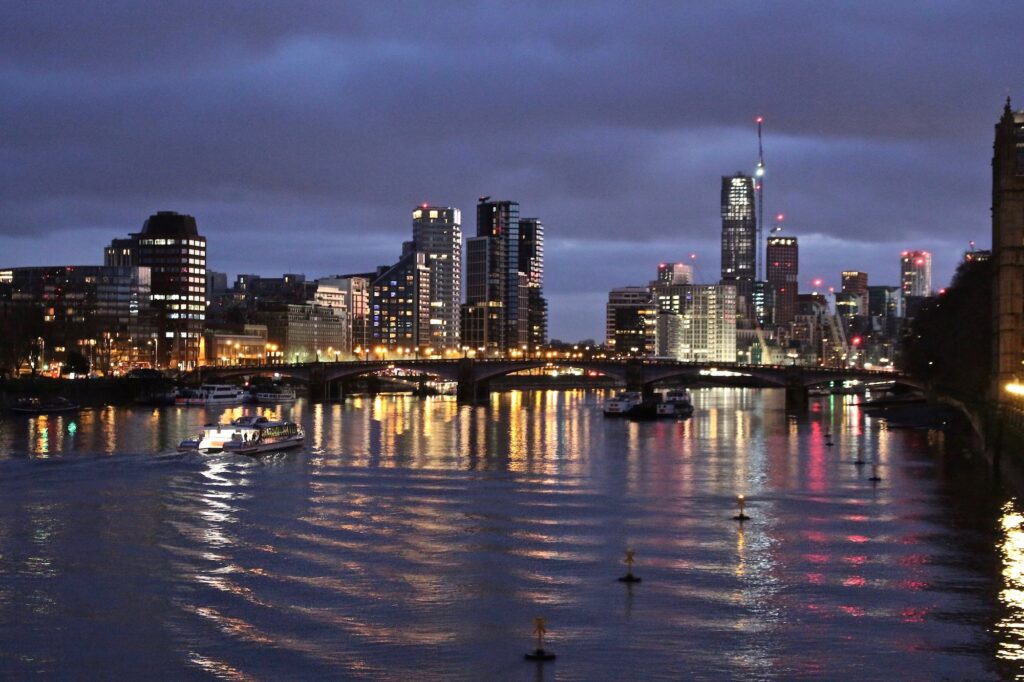
Further information
Printed
Bradley, Simon and Pevsner, Nikolaus: The Buildings of England: London 6: Westminster, Yale University Press, 2003.
Cookson, Brian: ‘Westminster Bridge’, London Historians, 2010.
Stone Peter: ‘The Original Westminster Bridge’
Online
See British History Online for more detail.
Engineering Timelines: Westminster Bridge 1862.
Heritage Calling Interesting details on the lighting of London’s Bridges.
The Liquid Highway the leading river Thames resource, with news and a fine collection of photos.
The Londonist: 11 Secrets of Westminster Bridge.
The Port of London Authority, table of bridge heights.